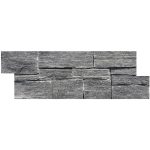Introduction
Cultured stone cladding, also known as manufactured stone veneer, has become a popular choice for both interior and exterior applications in residential and commercial construction. With its versatility, durability, and aesthetic appeal, cultured stone cladding offers a cost-effective alternative to natural stone while providing a wide range of design options. In this article, we will explore the various aspects of cultured stone cladding, including its composition, installation methods, benefits, and design considerations.
Composition of Cultured Stone Cladding
Cultured stone cladding is a lightweight, man-made product designed to replicate the look and feel of natural stone. It is typically composed of a mixture of cement, aggregates, and iron oxide pigments that are poured into molds to create various stone shapes and textures. The molds are then vibrated and cured to produce the finished product, which can closely resemble the appearance of natural stone such as limestone, granite, or slate.
One of the key advantages of cultured stone cladding is its consistency in color and texture, as it is manufactured in controlled environments to ensure uniformity across all pieces. This consistency allows for easier installation and a seamless appearance once the cladding is in place.
Installation Methods
Cultured stone cladding can be installed using a variety of methods, depending on the substrate and application requirements. The most common installation techniques include:
1. Adhered Method: In this method, the cultured stone panels are attached directly to the substrate using a mortar or adhesive. This is a popular choice for both interior and exterior applications and provides a seamless finish.
2. Stacked Stone Method: This method involves stacking individual stone pieces on top of each other to create a dry-stacked look. While this technique requires more precision during installation, it can result in a striking visual impact.
3. Grouted Method: In this method, the cultured stone pieces are installed with small gaps between them, which are then filled with grout to create a more traditional stone masonry appearance. This method is commonly used for exterior walls and fireplaces.
Benefits of Cultured Stone Cladding
There are numerous benefits to using cultured stone cladding in construction projects, including:
1. Cost-Effective: Cultured stone cladding is typically more affordable than natural stone, making it a budget-friendly option for homeowners and builders looking to achieve a high-end look without breaking the bank.
2. Lightweight: Cultured stone cladding is lighter in weight compared to natural stone, which can simplify transportation and installation processes while reducing structural requirements.
3. Versatility: Cultured stone cladding comes in a wide range of colors, textures, and styles, allowing for endless design possibilities. Whether you prefer a rustic, traditional, or contemporary look, there is a cultured stone option to suit your aesthetic preferences.
4. Durability: Cultured stone cladding is engineered to withstand the elements, making it a durable and long-lasting choice for exterior applications. It is resistant to fading, chipping, and cracking, ensuring that your cladding will maintain its beauty for years to come.
5. Low Maintenance: Cultured stone cladding requires minimal maintenance compared to natural stone, as it does not need to be sealed or treated regularly. Simply cleaning the surface with a mild detergent and water is usually sufficient to keep it looking its best.

Design Considerations
When incorporating cultured stone cladding into a design project, there are several key considerations to keep in mind:
1. Color Selection: Choose a color palette that complements the overall aesthetic of the space. Consider whether you want to create a bold focal point or a subtle backdrop, and select cultured stone colors accordingly.
2. Texture Variation: Mix and match different stone textures to add visual interest and depth to the design. Combining smooth and rough textures can create a dynamic contrast that enhances the overall look of the cladding.
3. Scale and Proportion: Consider the scale of the space and the size of the cultured stone pieces to ensure a harmonious balance. Large stones may overpower a small room, while small stones may get lost in a large space.
4. veneer stone : Work closely with a qualified installer to ensure proper installation techniques are followed. Pay attention to corner details, grout lines, and transitions between different materials to achieve a professional finish.
Conclusion
Cultured stone cladding offers a versatile and elegant solution for adding the timeless beauty of natural stone to any construction project. With its wide range of design options, cost-effective pricing, and durability, cultured stone cladding has become a popular choice among homeowners, designers, and builders alike. By understanding the composition, installation methods, benefits, and design considerations of cultured stone cladding, you can make informed decisions when incorporating this versatile material into your next project.
